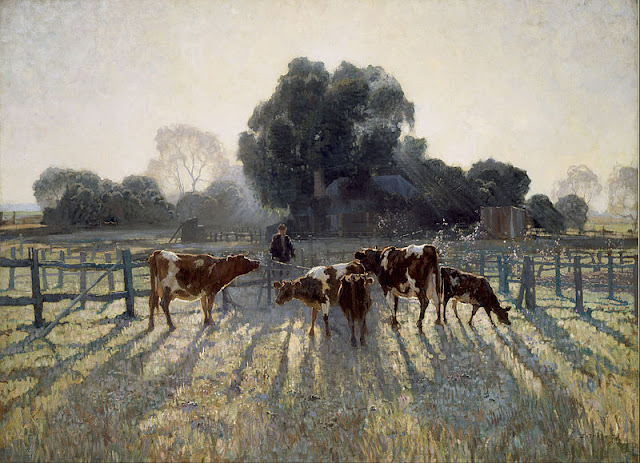Fernando Amorsolo y Cueto Paintings Collection
The Palay Maiden
Fernando Amorsolo y Cueto (May 30, 1892 – April 24, 1972) was one of the most important artists in the history of painting in the Philippines.
Amorsolo was a portraitist and painter of rural Philippine landscapes. He is popularly known for his craftsmanship and mastery in the use of light.
Don Fabián de la Rosa, his mother's cousin was also a Filipino painter. At the age of 13, Amorsolo became an apprentice to De la Rosa, who would eventually become the advocate and guide to Amorsolo's painting career.
During this time, Amorsolo's mother embroidered to earn money, while Amorsolo helped by selling water color postcards to a local bookstore for ten centavos each. Amorsolo's brother, Pablo Amorsolo, was also a painter.
Amorsolo's first success as a young painter came in 1908, when his painting Leyendo el periódico took second place at the Bazar Escolta, a contest organized by the Asociacion Internacional de Artistas.
Between 1909 and 1914, Amorsolo enrolled at the Art School of the Liceo de Manila. After graduating from the Liceo, he entered the University of the Philippines' School of Fine Arts, where De la Rosa worked at the time.
During college, Fernando Amorsolo's primary influences were the Spanish people court painter Diego Velázquez, John Singer Sargent, Anders Zorn, Claude Monet, Pierre-Auguste Renoir, but mostly his contemporary Spanish masters Joaquín Sorolla Bastida and Ignacio Zuloaga.
Amorsolo's most notable work as a student at the Liceo was his painting of a young man and a young woman in a garden, which won him the first prize in the art school exhibition during his graduation year.
Afternoon meal of the rice workers, 1951, oil on canvas.
Won first prize at the New York World's Fair.
Washing scene, 1953
The making of the Philippine Flag
El Ciego (The Blind Man), oil on panel, 1929. This work commissioned by a naval intelligence officer who helped in the liberation of Manila during World War II.
Mango pickers, oil on Canvas, 1936.
Fruit Gatherer, oil on board, 1950. A specimen of Amorsolo's conception of an ideal Filipina beauty.
Princess Urduja
A Basket of Mangoes, oil on canvas, 1949
Market scene
A young girl with jar, 1952.
Under the arbor, oil on Board, 1928.
Lavandera, oil on Board, 1928.
Portrait of an old lady, Oil on canvas laid down on board, 1941.
Returning fisherman, oil on Board, 1943.
Reading a Letter, 1933, India ink with pencil on heavy paper. Originally acquired by Whipple Hall and Ethel Crellin. Whipple Hall was American businessman who settled in Manila in 1909 and then returned to America in 1936. One of the folders containing the drawings bears a notation by Ethel Crellin dated 1933.
Days End, Washing the Carabao, 1928, oil on Board. At the end of the work day, the farmers take the carabao to the water for washing and feeding.
Writing a Letter, 1933, india ink with pencil on illustration board. Originally acquired by Whipple Hall and Ethel Crellin. Whipple Hall was American businessman who settled in Manila in 1909 and then returned to America in 1936. One of the folders containing the drawings bears a notation by Ethel Crellin dated 1933.
Old Spanish church, oil on canvas, 1957.
Along mountain trail
Landscape, oil on canvas, 1951.
Baguio, oil on board, 1941.
Water carrier, oil on Board, 1937.
Man with a cockerel, oil on board, 1938.
Sources:
Wikipedia
https://kahimyang.com/



































